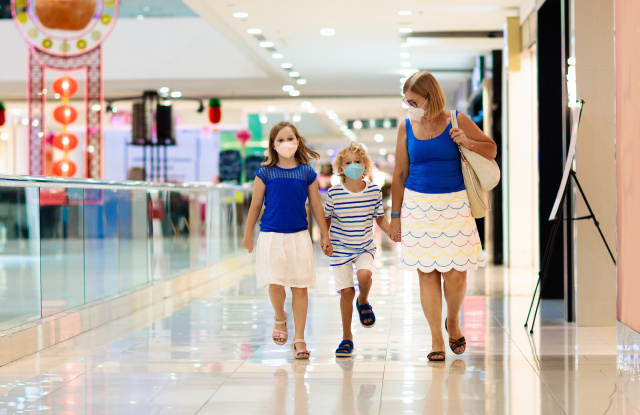Shopping For Baby and Toddler Clothing During a Pandemic

While it feels like the pandemic has put our lives on hold interminably, one thing it hasn’t brought to a halt is the growth of children. Babies keep growing, and their parents must keep accommodating to the different stages of growth and development. This, of course, means having to continue with education and other aspects that would constitute a normal routine. But the continuous growth of children also means that parents constantly have to purchase clothes for them.
For adults, clothes shopping isn’t a priority, but the same can’t be said for their small children growing every day. Adults have been trading in their work and outing attires for sweatpants and oversized shirts. The only kinds of adult apparel that haven’t been suffering as much during the lockdown are loungewear and pajamas. The struggling luxury fashion industry has been trying to keep up by manufacturing its version of loungewear and work-from-home attire.
But clothes shopping for children is a very different story. Children quickly outgrow their clothes, so their parents will naturally need to replace their attire more often. Not to mention that they’ll need to dress differently for different seasons. But how do you shop during a pandemic when your go-to brick-and-mortar newborn girl clothes boutique is closed?
Economy and fertility rates
Before the pandemic, millennial women had already been wary of having children. Millennials make up the largest group in today’s workforce but aren’t as financially stable as their baby boomer parents were at their age. This is due to rising student debt loans and lack of recovery from the 2008 global recession when the older bracket of this generation was coming of age.
Because of a lack of financial stability, millennials had been waiting until later to get married and have children. The pandemic has only served to further cement these resolutions. This will lead to a lasting baby bust, which will have repercussions on the baby clothes and care items market.
Despite being labeled essential items, several brick and mortar baby clothes retailers have closed their stores and filed for bankruptcy. By the end of 2021, The Children’s Place will have closed 300 stores due to the pandemic. Baby Gap plans to close more than 200 locations by 2024. Carter’sjoins the list and will also be closing several of its Osh Kosh B’gosh locations. If you’re a big fan of these establishments and still want to buy from them, run to them before they close.
What to look for in a baby clothes retailer
Sizing charts. The best way to shop for just about anything at the moment is online. But the difficulty of online clothes shopping lies in estimating fit. Make sure to look at retailers that have sizing charts with measurements down to inches or centimeters.
Small businesses. Two mothers in the U.K., Laura Boswell and Laura McBride, started an online baby clothes and decor store during the pandemic, and their sales have been doing well. The store, called baby Chum, carries products made by several independent handcrafters and sellers.
More people have been supporting small businesses during the pandemic. The advantages of supporting small local retailers include the benefits for the local economy, the smaller carbon footprint, and the attention put into making the products. Bigger retailers mass produce their products, and while that ensures consistent quality in their product range, it also takes away from any care put into making the products.
Small retailers like Baby Chum have products made by independent handcrafters who are often parents themselves – people who are not just familiar with children but have their own and want to see them cared for. Supporting local brands ensures that you’re getting unique products of excellent quality and tailor-made for the customer.
Pickup and delivery. During this time, parents will be even more concerned for the well-being of their children. Going out to shop at brick and mortar retailers and using their fitting rooms is almost certainly a no-go. Apart from detailed sizing charts, you should also look for retailers that allow curbside delivery or BOPIS (buy online, pick up in-store) methods. These limit contact while still allowing you to accomplish what’s necessary.
A global health crisis and recession doesn’t stop your children from growing. Despite the closure of many brick and mortar establishments, there are still plenty of places for you to get your children what they need. These might be the remaining establishments of larger retailers, but they could also be smaller businesses run by independent handcrafters and fellow parents.






